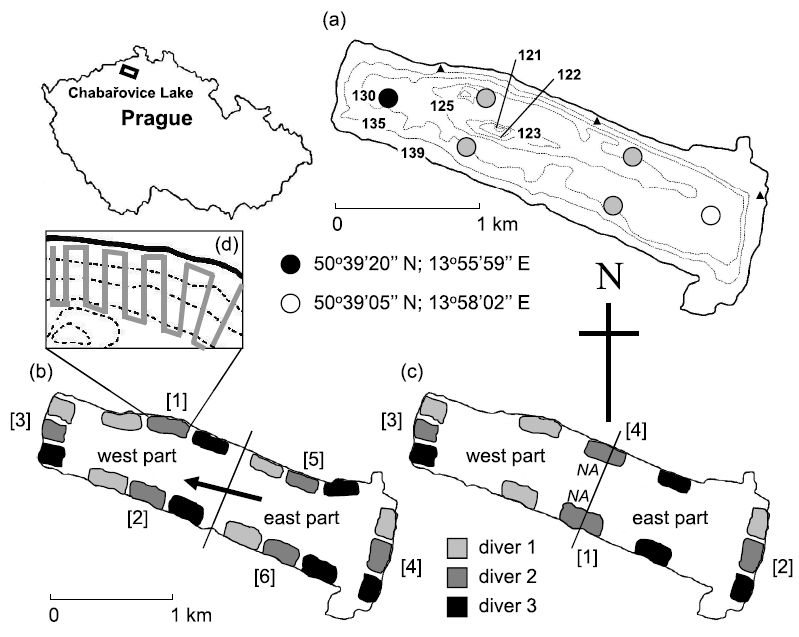 The reproduction biology of perch Perca fluviatilis was studied in relation to lake hydrology, spawning substrate and female size using SCUBA divers during late April and mid-May 2009 in Chabařovice Lake, Czech Republic. An extreme displacement of water mass, induced by a long-lasting strong wind, caused the abundance of egg strands to differ significantly between individual parts of the lake. On average, 91% of perch spawning activity occurred at depths greater than 3 m. The mean concentration of dissolved organic carbon (DOC) indicated that the lake belongs to the category where DOC influencing the penetration of ultraviolet radiation, is not responsible for the deep deposition of egg strands by perch. Most probably, the avoidance of shallow depths (<3 m) results from strong wind/waves coming from any direction. Larger perch females started to spawn earlier than their smaller conspecifics and they used shallower depths for depositing their egg strands. As a spawning substrate, perch strongly selected dead submerged vegetation, such as common reed Phragmites communis and worm weed Artemisia sp. These substrates, however, reveal signs of progressive degradation and seem likely to disappear from the lake within several years.
The reproduction biology of perch Perca fluviatilis was studied in relation to lake hydrology, spawning substrate and female size using SCUBA divers during late April and mid-May 2009 in Chabařovice Lake, Czech Republic. An extreme displacement of water mass, induced by a long-lasting strong wind, caused the abundance of egg strands to differ significantly between individual parts of the lake. On average, 91% of perch spawning activity occurred at depths greater than 3 m. The mean concentration of dissolved organic carbon (DOC) indicated that the lake belongs to the category where DOC influencing the penetration of ultraviolet radiation, is not responsible for the deep deposition of egg strands by perch. Most probably, the avoidance of shallow depths (<3 m) results from strong wind/waves coming from any direction. Larger perch females started to spawn earlier than their smaller conspecifics and they used shallower depths for depositing their egg strands. As a spawning substrate, perch strongly selected dead submerged vegetation, such as common reed Phragmites communis and worm weed Artemisia sp. These substrates, however, reveal signs of progressive degradation and seem likely to disappear from the lake within several years.
Keywords: aquatic vegetation; Chara vulgaris; common reed; common stonewort; dissolved organic carbon; lake management; Phragmites communis; SCUBA diving
